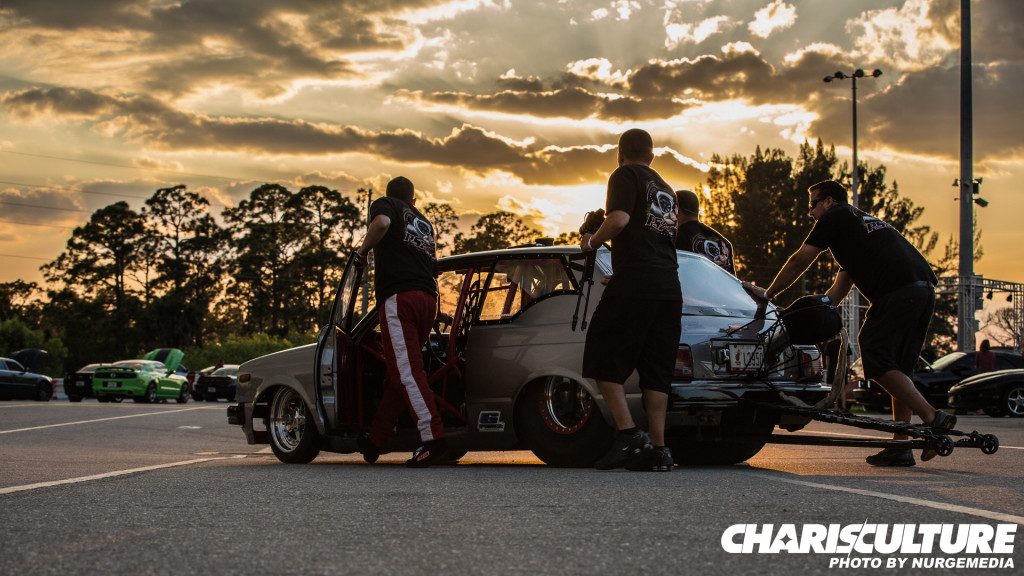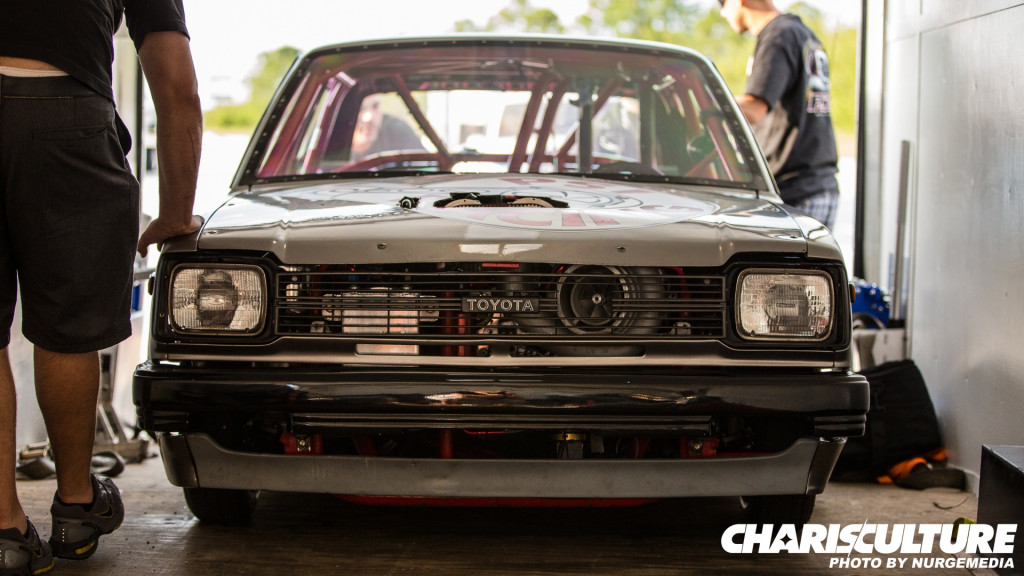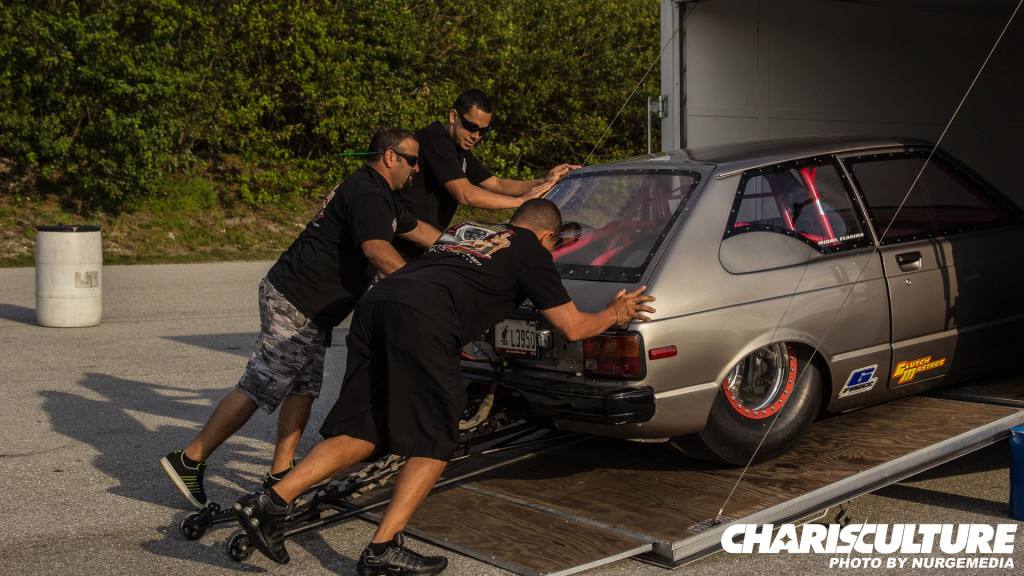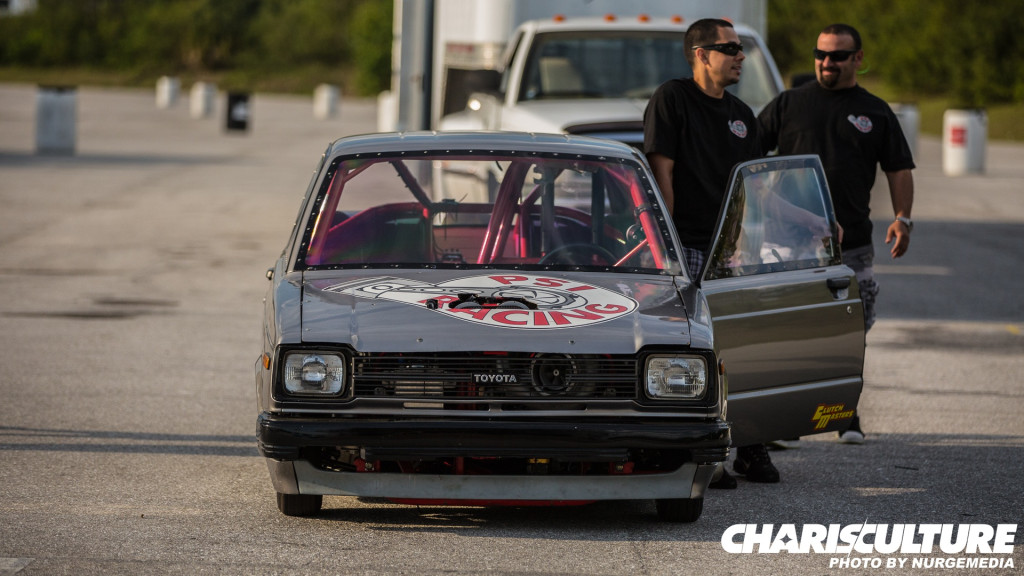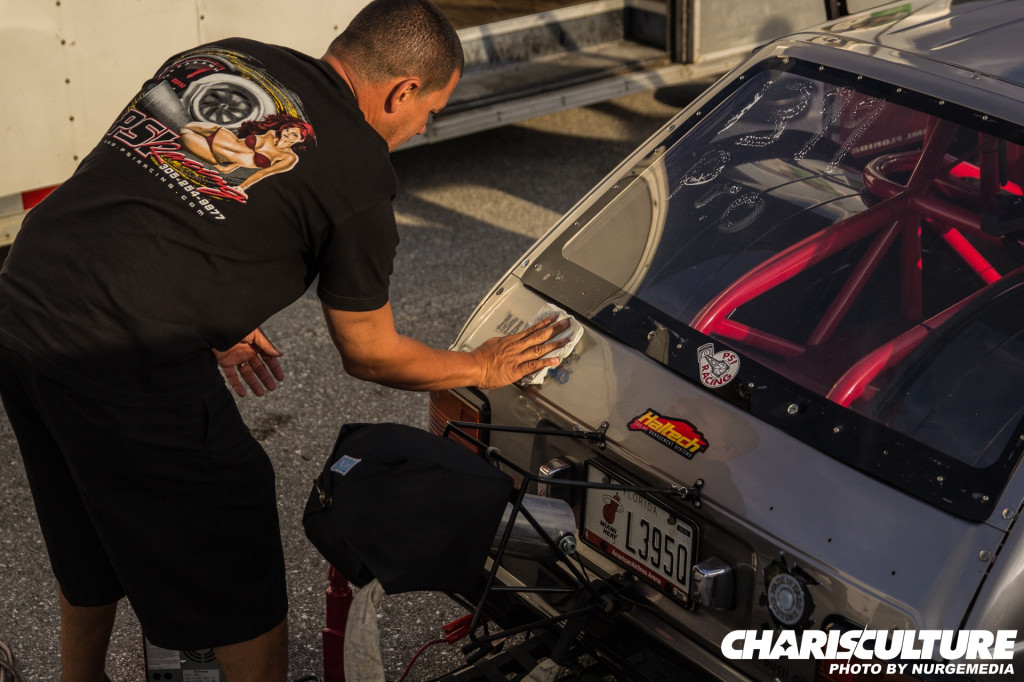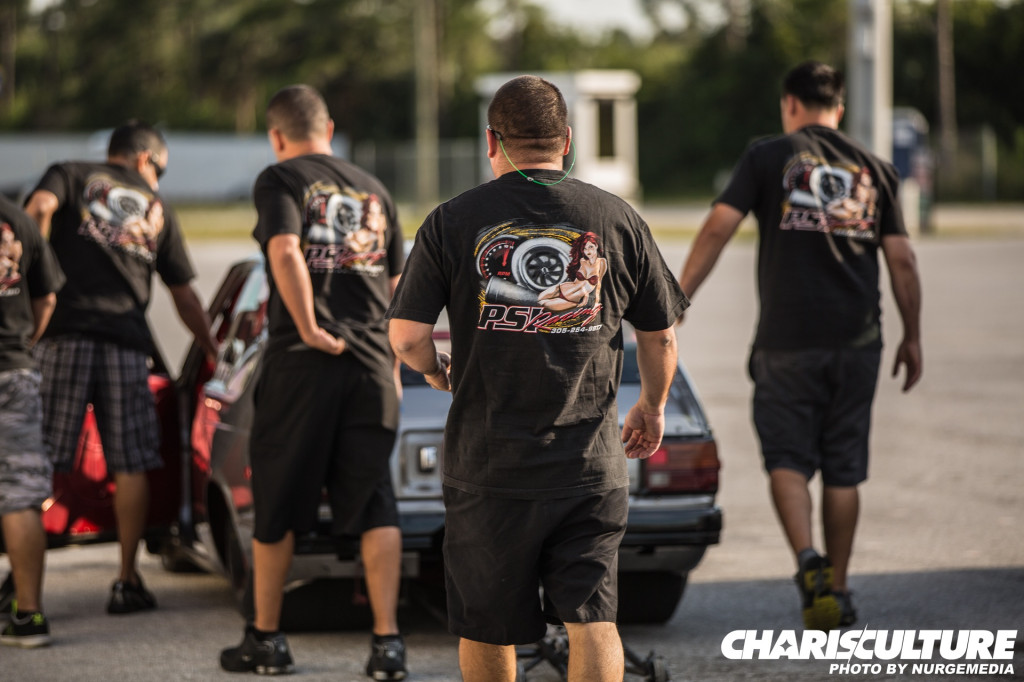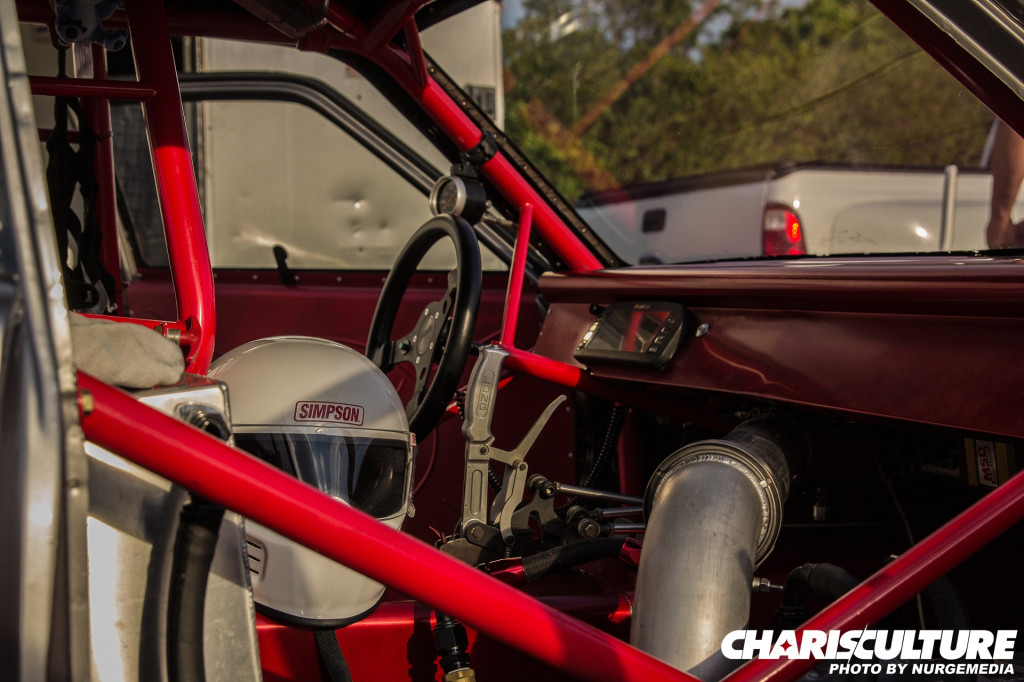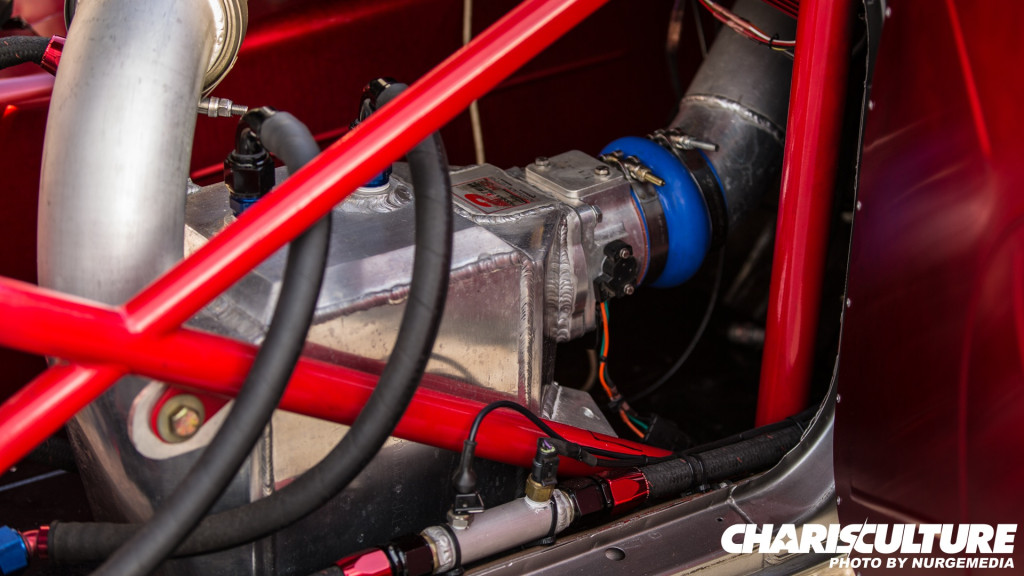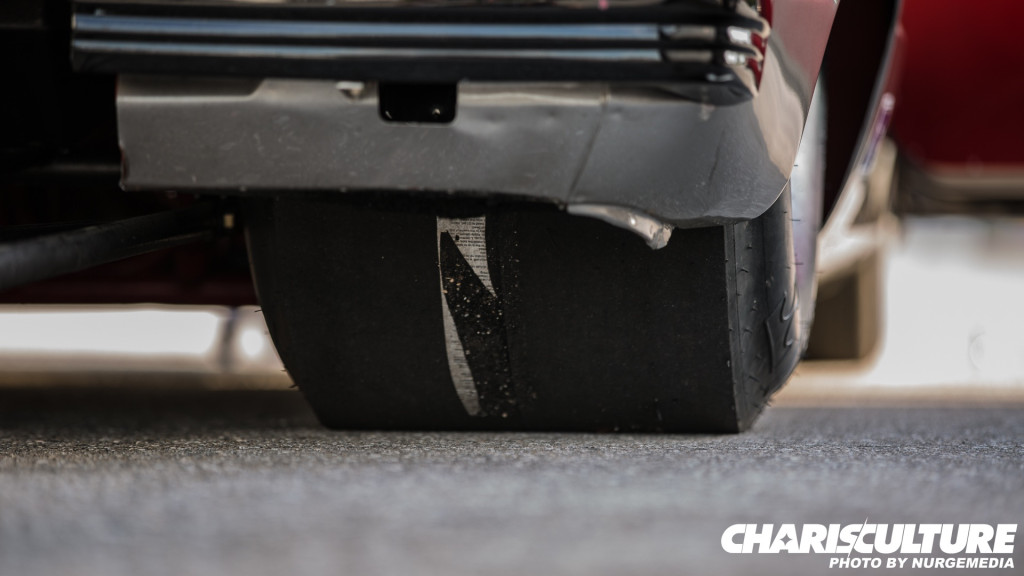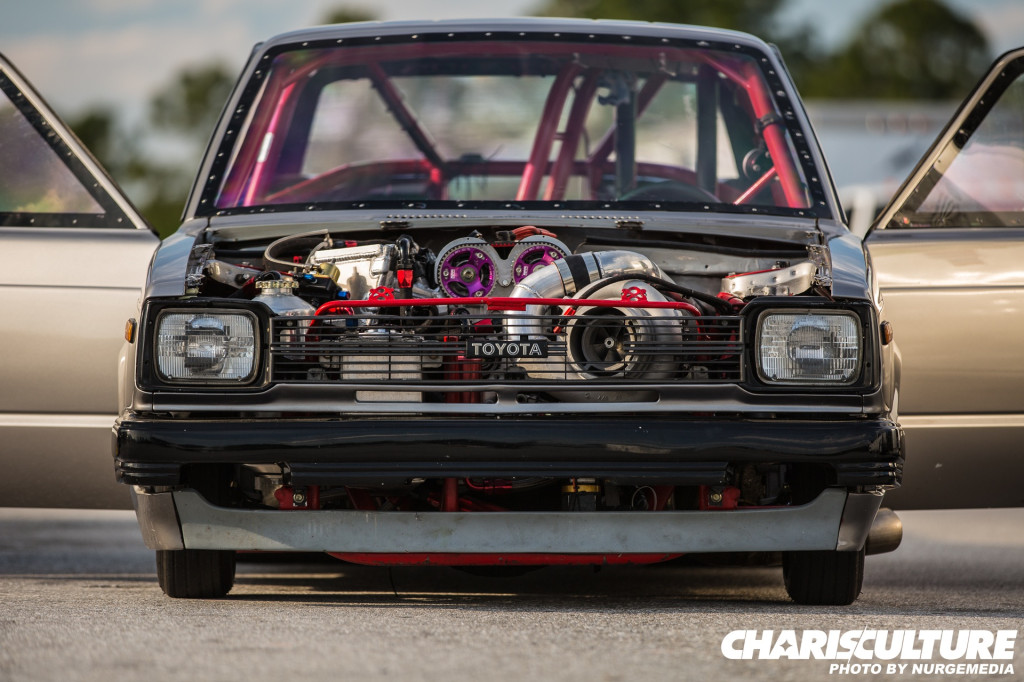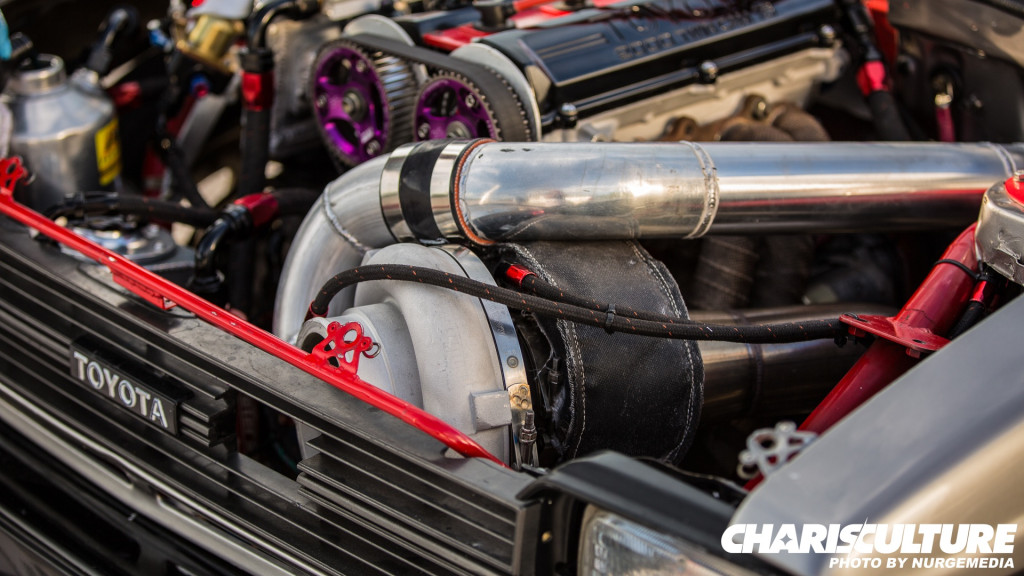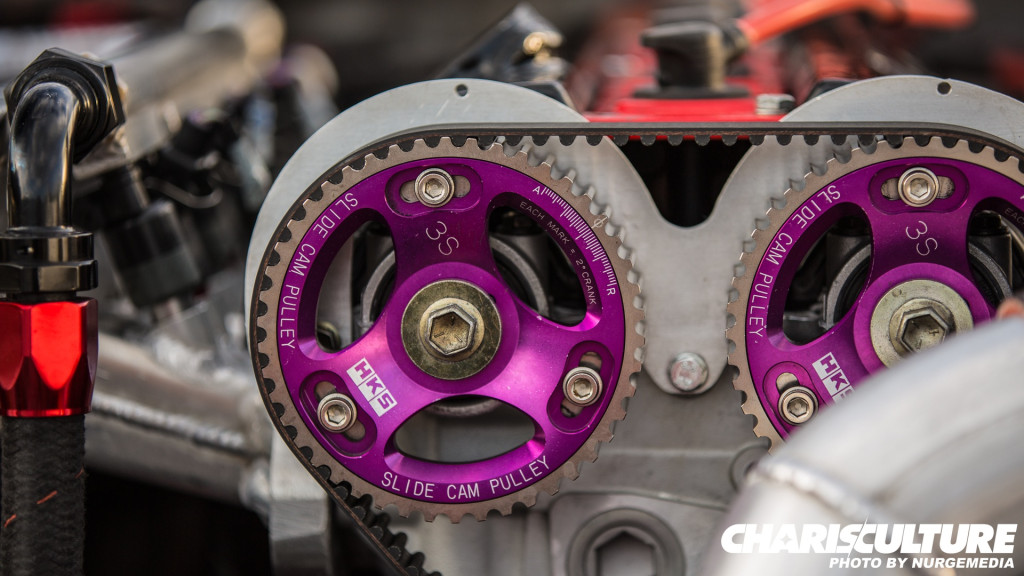“Wow, this is insane” were the first words I said to myself when I saw PSI Racing’s Toyota Starlet at the Nurotag Allstars Miami show. So, after gravitating towards the car at the show, we met Brendan Alvarez and Juan Padilla (driver and owner of the car). We handed them some contact information so that we could send them the photos we took.
We really fell in love with the car and reached out to them about potentially doing a photo shoot. Now this isn’t more show then go, so as opposed to setting it up in some stand alone location, we figured why not catch it in its environment. What better place than Palm Beach International Raceway ? It’s a place I have been attending for all forms of races since I was a little kid (Circa MOROSO. Gone but never forgotten ).
After going back and forth with Brendan trying to schedule a shoot, we found ourselves at a Wednesday night Test and Tune where you see all types of amazing vehicles, but that night, it was all about their Toyota Starlet
We arrived minutes before the PSI Racing team, chatted for a bit and then immediately after, it was business as usual.
So, what is it? A 1983 Toyota Starlet started off as your basic Starlet with the first release of the 1.3L fuel-injected engine. After days and days of cutting, the Starlet went off to receive its new chassis, and two years later, here we are.
Originally powered by a PSI Racing stroker 3tc, the car ran its first pass back in May 2005 with an 8:30 @158MPH and eventually ran an 8:05 @166MPH. After years of discussing a new power plant to compete with, they decided switch over to the potent and powerful 3S/mr2 engine.
We were really excited to see this car run. I have seen multiple videos on the internet, but nothing beats standing on the track next to a 1000hp car. Everyone was calm and positive despite previous issues, one involving tire shake problems, which mainly seemed to occur in the first hundred feet of the 1/4 mile.
It can’t be all power. Nothing wrong with a little clean up before hitting the strip right?
Thankfully, they passed tech and the crew, brought the car back and pushed it to the pit area we were in and started prepping everything for the race. Every inch of the car was given a second look. It also gave us a chance to shoot the calm before the storm.
Everything you need is right here – simple and straight to the point.
The air is maintained with a huge in car air to water intercooler pressurized through a 90mm throttle body into a PSI Racing intake manifold.
Tire shake issues in theory are when you either overspeed or underspeed the tire. There’s also a long list of other issues that contribute to the problem: suspension, tire construction, 4-link setup etc. It’s definitely a tricky situation, especially in a pro import drag car because they are lighter than most drag cars but run a very big (32 tall x 14 wide x 15 long) drag slick rim.
Sporting a set of new compound style Mickey Thompson tires, some different shock settings and maybe even most important, a computerized, completely programmable boost controller, the latest and greatest Haltech ECU and a redesigned pressure plate from Clutchmasters are all in place to help make every pass from this day forward as smooth as possible.
The motor consists mainly of mods and customization from PSI Racing. They use a factory turbo style 3SGTE crankshaft, billet main caps to keep the crankshaft secure, custom made GRP Aluminum rods with Arias pistons. The cylinder head is ported and polished by PSI Racing themselves, custom cam profiles and a full REV Valve train. A combination of quality, blood, sweat and tears.
A little boost? What you see here is a GT45R mounted to a stainless PSI Racing Stainless turbo manifold. This isn’t for the weak at heart.
